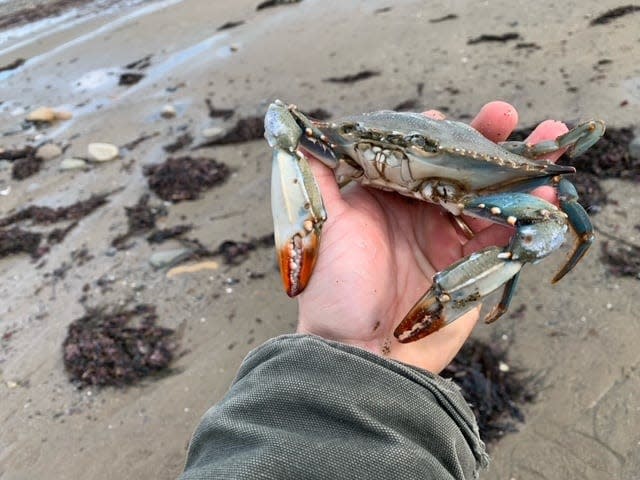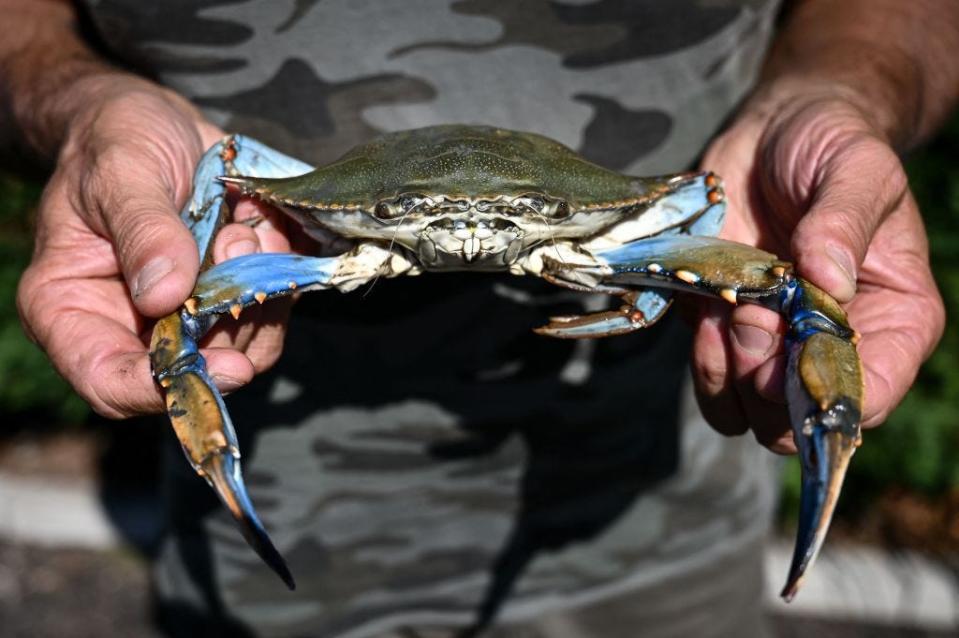Invasive 'American' blue crabs are taking over the Mediterranean Sea: Here's why
According to Miriam Webster dictionary, invasive species are “a non-native organisms growing and dispersing easily, usually to the detriment of native species and ecosystems.”
I think that this is a perfect definition.
Unfortunately, our world has become global both on land and sea. In the sea, organisms are regularly transported from one region to another in the ballast water of ships. When a ship is empty of cargo, it is very light and rides high in the water and becomes unstable. For centuries, to maintain stability, ships have taken on “ballast” water to add weight and make the ships ride lower in the water. When the ship reaches the port where it picks up cargo, it discharges the ballast water into the harbor to lighten the load. Problems occur when the water contains organisms, either plant or animal, from another sea or ecosystem. Sometimes, the water temperature or salinity is so different from their sea of origin that the organisms just die. Just as often, the organisms land in a new environment without any natural predators and they thrive.

Recently I had a visitor to the Oceanarium from Italy. When I began showing him the invasive crabs that have invaded the Gulf of Maine, he showed me an article about the Adriatic Sea and an invasion of blue crabs. He wanted to know why we didn’t have one for him to look at, as he was curious about them. He couldn’t understand why they would thrive in the Adriatic when they came from the cold water of the Atlantic. I explained to him they are not native to the Gulf of Maine. They originate in the mid-Atlantic, found in the warmer water of the Chesapeake Bay south.
Blue crabs at Hampton Beach: Can you take them home for dinner? Just don't get pinched
This surprised him, but the article was intriguing to me as I hadn’t heard about this before. It appears that the Atlantic blue crabs, which are famous in southern states and the Chesapeake Bay as a delicacy, have somehow been transported to the Mediterranean Sea. The general feeling is that they were inadvertently dumped into the Mediterranean by bilge or ballast water.
I realize that the dumping of water by ships to regulate ballast is an accepted practice, but as a scientist, I find this practice unconscionable. We need to develop an easy, safe way to regulate ballast that does not include discharging water. You would think we would have developed a more environmentally friendly way to do this in the last few centuries.
Be that as it may, the American blue crabs, as the European countries are referring to them, are in the Mediterranean to stay. For centuries, the accepted way to rid an area of invasive species has been to introduce a predator for that invasive. Time and time again, this practice has proved to be more harmful than the original species. When will we ever learn?
Sharks are built to feed: Here's why they are the ultimate eating machines
Meanwhile, back in the Mediterranean, Turkish fishermen have had their fish catches destroyed by blue crabs. Fishermen are some of the most resilient people I have ever met. These fishermen decided to fish for the blue crabs and start a market for them. They are embracing the moment and continue to try to make a living fishing in the sea. As a scientist looking back over history, it appears that the only way to rid a region of an invasive species is to develop a market for it. Hopefully, this will curtail their numbers, and eventually, an ecological balance will be obtained.

In the Adriatic Sea, a part of the Mediterranean Sea between Greece and Italy, the Italians have declared an emergency because the blue crabs have devasted their clam aquafarm industry, a local delicacy. They have decided to catch the crabs and kill them, spending upward of two million Euros to do it. I’m not sure that will do the trick, as the crabs lay hundreds of thousands of eggs. Time will tell.
Here in the Gulf of Maine, we have so many invasive species that you need a scorecard. The most visible ones are the Asian shore crabs and the green crabs. These can be traced to ballast water. The green crabs and periwinkles began showing up on the East Coast sometime in the late 1800s from Europe. They have been here so long that everyone thinks of them as native.
More: What’s behind the surge of blue, orange and calico lobsters in the Gulf of Maine?
The Asian shore crabs are another story. They seem to have appeared somewhere near New Jersey in 1988 and took only about a decade to make it into the Gulf of Maine. They are voracious feeders with striped legs and huge mitten-like claws with a bubble of skin in the middle of their claws. This allows them to hyper-extend their claws and grab onto large objects. They can annihilate anything in their path, including unsuspecting fingers.
I warn people to keep their children away from these crabs, as I know from experience they can cut right through your fingers. A bit of handy advice, if you find yourself with a crab attached to a finger or toe, do not try to shake it off. The crab will just clamp down harder. The sure way to remove it is to slowly place your hand under the water, and hold perfectly still. The crab will drop right off and scurry away. I guarantee this works every time!
As I said before, the only way to rid an area of an invasive species is to develop a product using them. In the case of the green and Asian shore crabs, an enterprising company in Gloucester, Massachusetts, Neptune’s Harvest, has started a fishery turning them into fertilizer!
Ellen Goethel is a marine biologist and the owner of Explore the Ocean World at 367 Ocean Blvd. at Hampton Beach.
This article originally appeared on Portsmouth Herald: Invasive 'American' crabs are taking over the Mediterranean Sea

